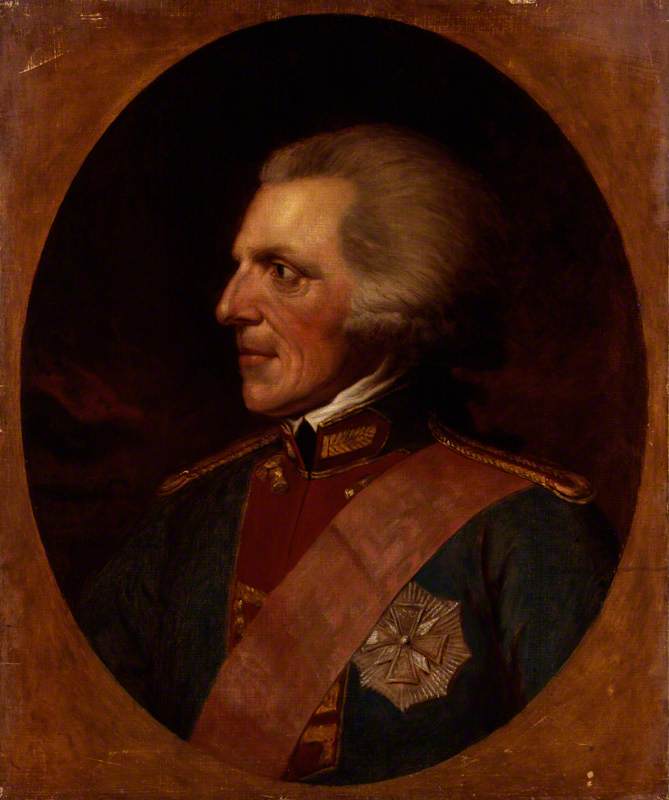by Heather Rockwood, Communications Manager
Growing up close to the Rhode Island border in Massachusetts, I was familiar with Rumford Baking Powder, created by Eben Horsford (1818–1893), Rumford Professor at Harvard University, and how it was the most popular product manufactured in Rumford, RI. So, when I came across “Count Rumford” in the MHS archives under the George E. Ellis Papers, I connected the two and thought they were related. I was wrong, but also right.
Count Rumford, or Benjamin Thompson Jr., was born in Woburn, Massachusetts, on 26 March 1753. He went to school in Woburn and Byfield and attended Harvard classes, apprenticed to a doctor for a short time and to a merchant. During his apprenticeships he gained refinement and an interest in science. In 1772, he married Sarah Rolfe, a rich and well-connected widow. Her late husband left her property in Rumford, New Hampshire (now Concord), but after marrying, the couple moved to Portsmouth and had a daughter two years later, whom they named Sarah.

When the American Revolution started, Thompson was a loyalist, and although his wife’s connections got him an appointment as a major in the New Hampshire militia, he acted as a British intelligence agent and recruiter for the British army. His activities became known, and a mob attacked his house. He escaped, abandoning his wife and child. For the rest of the war, he led the king’s American Dragoon’s on Long Island and conducted scientific experiments on gunpowder. The results of his work were published in 1781, in Philosophical Transactions, solidifying his early scientific acclaim. When the war ended in 1783, he left the United States, never to return. In England, King George III knighted him, and in 1785 he moved to Bavaria where he undertook projects for Prince-elector Charles Theodore, including cultivating the potato and creating the Englischer Garten park that still exists today. He also continued his scientific research, for which he was made an Imperial Count, Reichsgraf von Rumford, named for the New Hampshire town of his marriage.
Count Rumford spent eleven years in Bavaria conducting scientific research, the most important of which was a contentious theory that heat was not caloric but caused by motion. His research on this topic helped to later create the law of the conservation of energy in the 19th century.
So, how was Count Rumford connected to Rumford Baking Powder? He endowed the Rumford Chair and Lectureship on the Application of Science to the Useful Arts at Harvard, under which Eben Horsford was employed. Eben Horsford also built statues to Leif Erikson, but that’s a different blog.
What happened to Count Rumford’s wife and daughter? And where did he go after those eleven years in Bavaria? Stay tuned for part 2, where we connect this story to the MHS’s archival documents.
Count Rumford, Rumford Baking Powder, Rumford, NH, Rumford, RI, and the Rumford Professor at Harvard University, Part 2: He Loves Her, He Hates Her

